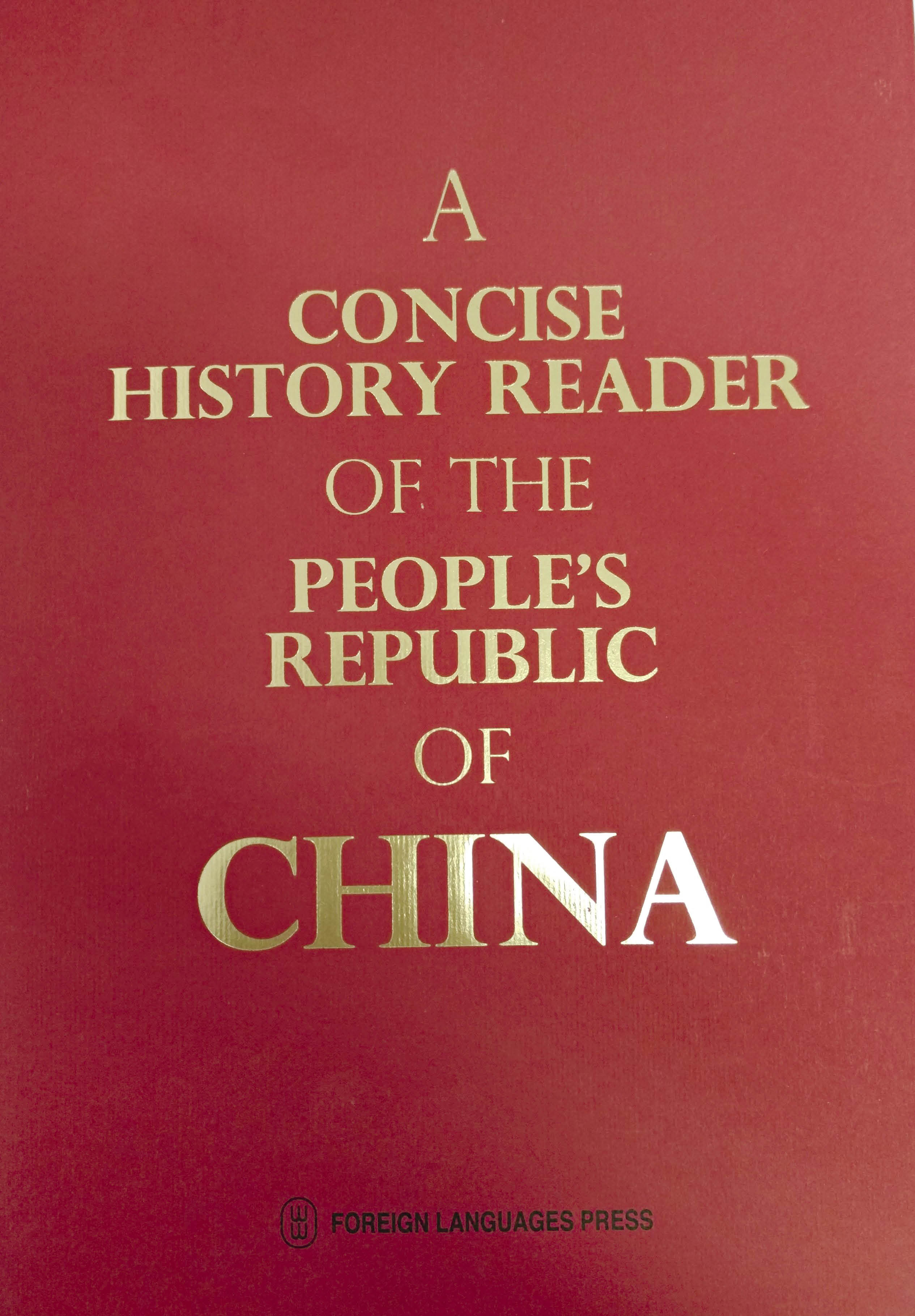A Historical Review
By staff reporter ZHOU LIN
A Concise History Reader of the People’s Republic of China is a condensed compilation by the Institute of Contemporary China Studies over 20 years from a multivolume collection. It is the first monumental work recording the development history of the PRC.

A Concise History Reader of the People’s Republic of China
Editors: Yang Chunyan, Sun Yixin
Hardcover, 359 pages
Price: RMB 200
Published by the Foreign Languages Press
The book consists of four chapters which cover 35 years of history, starting from Mao Zedong’s declaration on October 1, 1949 of the founding of the PRC through to the Third Plenary Session of the 12th CPC Central Committee of October 20, 1984, when the decision to speed up reforms to the country’s entire economic structure was adopted.
The first chapter, covering the period 1949-1956, recounts the founding of the People’s Republic of China and establishment of the socialist system. The second tells of the painstaking construction from 1956 to 1966 of socialism on all fronts. The third chapter records the 10-year “cultural revolution” from 1966 to 1976. The fourth chapter examines the eight years from the end of the “cultural revolution” in 1976 to the decision to deepen economic reform in 1984.
The introduction acquaints the reader with the origins of the birth of New China and the arduous course of establishing the PRC, from the earliest attempts by the working class to rebuild the state, to the armed independent regime of workers and peasants, and from the republic of workers and peasants to a democratic republic through to the struggle for a democratic coalition government.
The book’s plentiful pictures include photos of the site of the Party’s First National Congress in Shanghai, where the CPC was founded in 1921, of Chen Yun’s manuscript of the Zun-yi Meeting that took place in January 1935 during the Long March, scenes from the victorious battle at the Pingxingguan Pass by the united front of the Eighth Route Army led by the CPC and the then ruling party KMT, the First Plenary Session of the Chinese People’s Political Consultative Conference, and Mao Zedong’s declaration of the founding of the PRC at Tiananmen Gate. From then on, the history of the Chinese nation entered a new epoch of development and progress.
The first chapter is about the so-called “golden age” from 1949 to the establishment of the socialist system in 1956. The founding of the People’s Republic of China signified the victory of the new democratic revolution and the end of the semi-colonial, semi-feudal society. It also marked the establishment of the new-democratic regime and start of the transition to a socialist society.
This chapter also gives accounts of the peaceful liberation of Tibet, the War to resist U.S. aggression and aid Korea, the suppression of counter-revolutionary activities, the restoration of the national economy on the basis of unifying finance, implementation of the first five-year plan and the preliminary basis for socialist industrialization, establishment of the system of people’s congresses and regional ethnic autonomy, the development of education, science, culture and health, the Geneva Convention and Asian-African Conference. The book’s vivid pictures showcase scenarios from the thriving, prosperous New China.
The second chapter records the period from 1956 to 1966, the decade when China started to comprehensively build socialism. The CPC started exploring the socialist road appropriate to China’s realities, as represented in Mao Zedong’s “On the 10 Major Relationships.” This period, however, also encompassed the “Great Leap Forward,” the People’s Commune Movement, and the efforts to correct “Leftist” mistakes. The national economy and various undertakings progressed amid arduous efforts and constantly adjusted policies.
The third chapter recalls how socialist undertakings suffered during the 10-year “cultural revolution,” and how the Chinese people learnt historical lessons from this bitter experience.
The last chapter records the great historic transition and start of reform and opening-up. It starts from the great debate on the criterion for truth, and the Third Plenary Session of the 11th CPC Central Committee, during which the CPC passed the Resolution on Certain Questions in the History of Our Party Since the Founding of the People’s Republic of China, to readjust the structural reform of the economy and make breakthroughs in rural reform and urban economic structural reform, and to open up to the outside world. Other landmark events included the proposal and practice of “one country, two systems,” development of socialist culture and ethics, new prospects for independent and peaceful diplomacy, the proposal at the 12th CPC National Congress to “build socialism with Chinese characteristics,” and the Decision on Reform of the Economic Structure.
At the meeting of the Political Bureau of the CPC Central Committee on June 25, 2013, Chinese President and General Secretary of CPC Central Committee Xi Jinping emphasized the importance of learning from history, especially that of the CPC and the nation as a whole. He regards this as crucial to building socialism with Chinese characteristics and pushing forward relevant undertakings in all aspects. It was this speech that prompted the Chinese edition of this book, followed by the English version, so to present the history of the PRC to peoples of the world.
